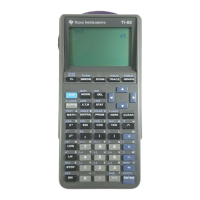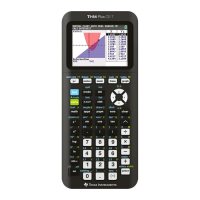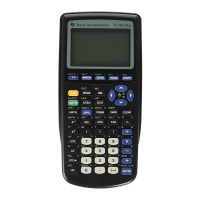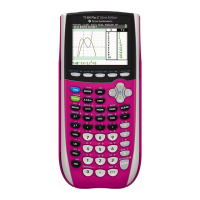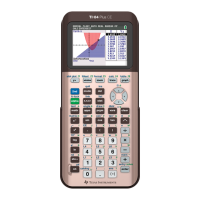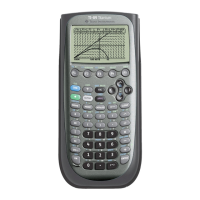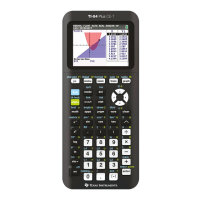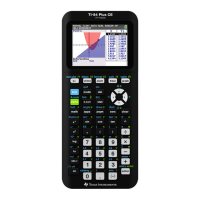Function Graphing 3.3
82533F~1.DOC TI-83 international English Bob Fedorisko Revised: 10/26/05 1:20 PM Printed: 10/27/05 1:55
PM Page 3 of 28
Chapter 3 specifically describes function graphing, but the steps
shown here are similar for each TI-82 STATS graphing mode.
Chapters 4, 5, and 6 describe aspects that are unique to
parametric graphing, polar graphing, and sequence graphing.
To define a graph in any graphing mode, follow these steps.
Some steps are not always necessary.
1. Press z and set the appropriate graph mode (page 3.4).
2. Press o and enter, edit, or select one or more functions in
the
Y= editor (page 3.5 and 3.7).
3. Deselect stat plots, if necessary (page 3.7).
4. Set the graph style for each function (page 3.9).
5. Press p and define the viewing window variables
(page 3.11).
6. Press y [
FORMAT] and select the graph format settings
(page 3.13).
After you have defined a graph, press s to display it.
Explore the behavior of the function or functions using the
TI-82 STATS tools described in this chapter.
You can store the elements that define the current graph to any
of 10 graph database variables (
GDB1 through GDB9, and
GDB0; Chapter 8). To recreate the current graph later, simply
recall the graph database to which you stored the original graph.
These types of information are stored in a
GDB.
•
Y= functions
• Graph style settings
• Window settings
• Format settings
You can store a picture of the current graph display to any of 10
graph picture variables (
Pic1 through Pic9, and Pic0; Chapter
8). Then you can superimpose one or more stored pictures onto
the current graph.
Defining Graphs
TI-82 STATS—
Graphing Mode
Similarities
Defining a Graph
Displaying and
Exploring a
Graph
Saving a Graph
for Later Use
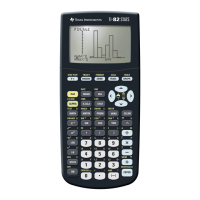
